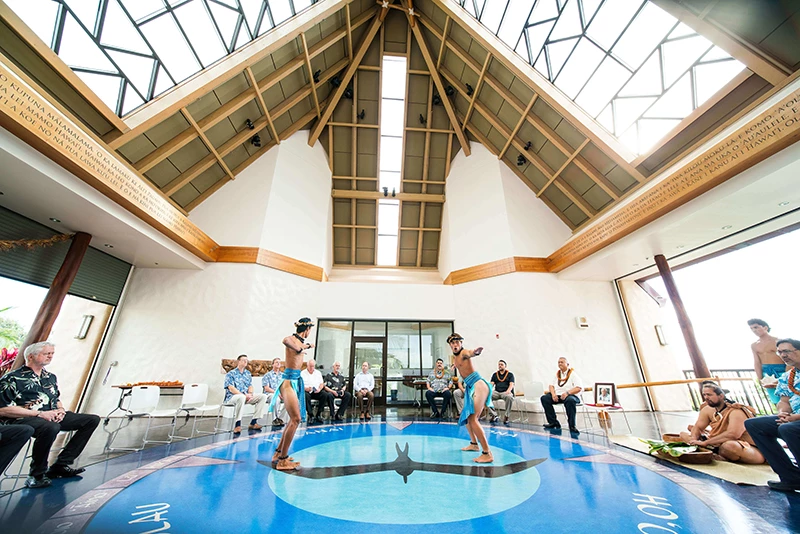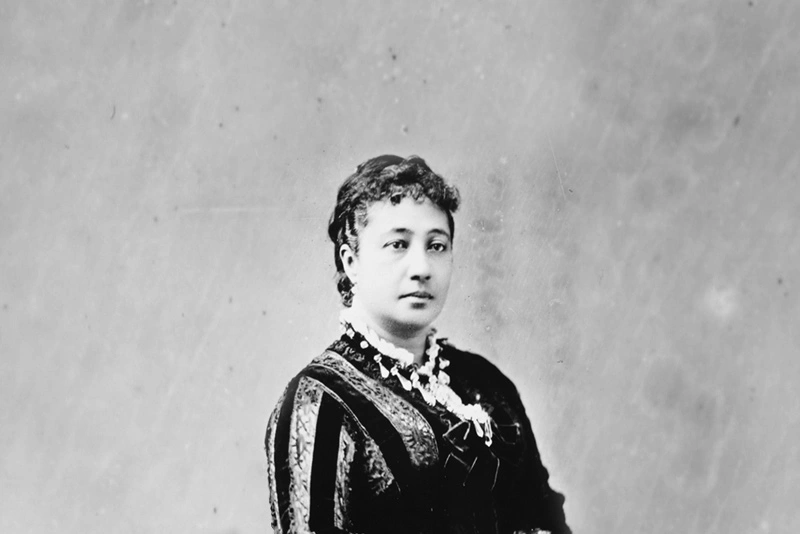All documents submitted to the Data Center for verification, including birth certificates, marriage certificates, and court documents, must be certified copies issued by a duly authorized state or government agency. A certified copy is one that is guaranteed by the issuing authority to be a true and exact copy of the original. A photocopy of the certified copy cannot be used for verification. All documents will be returned to you after they have been inspected for authenticity and photocopied by Data Center representatives.
Birth certificates
Birth certificates must be submitted to support information provided on the Hawaiian Ancestry Registry (HAR) form. Original birth certificates are the primary documents used to verify ancestry because they generally reflect information based on first hand knowledge of the circumstances at the time of birth.
Required birth certificates
Birth certificates must be submitted which allow us to trace Hawaiian ancestry from the applicant to an ancestor born in Hawai‘i in 1959 or earlier via a series of uninterrupted biological child-parent relationships. In general, this means that you will need birth certificates for the applicant, the Hawaiian parent, and the corresponding Hawaiian grandparent. If the Hawaiian grandparent was born after 1959 and/or was born outside of Hawai‘i, the corresponding Hawaiian great grandparent’s birth certificate is also required, and so on. This also means that only the birth certificate of the applicant and the Hawaiian parent would be required if the Hawaiian parent was born in Hawai‘i in 1959 or earlier.
If both sides of your family are Hawaiian, birth certificates for only one side are required. However, submitting documents for both sides of your family may expedite the verification process. If there is a question about documents on one side, we will automatically try to verify ancestry via documents submitted for the other line.
Where to get birth certificates
Certificates for births in Hawai‘i may be obtained from the Vital Records section of the Hawai‘i State Department of Health (DOH). See page where to get your documents for information about obtaining Hawai‘i birth documents.
Certificates for births outside of Hawai‘i may be obtained from the Vital Records office in the state in which the birth occurred. For a list of all U.S. Vital Records offices, visit the National Center for Health Statistics Web site at: http://www.cdc.gov/nchs/w2w.htm.
What to do if a birth certificate is not available
If a required birth certificate cannot be found in the Vital Records office archives, the department will issue you a “No–Record Certification” document. This document must be submitted to the Data Center before alternative documents can be accepted in place of the non–existent birth certificate. At least two alternative documents are required, one of which must have been issued in 1959 or earlier. Some acceptable alternative documents are listed below:
- Marriage certificates
- Death certificates
- Certificates of baptism
The admissibility of alternate documents will be determined by the Data Center. It may also take longer to complete the verification process when these types of documents are submitted. See page where to get your documents for information about obtaining vital documents.
Certificates of delayed birth and Hawaiian birth
Some types of birth certificates, including certificates of delayed birth and certificates of Hawaiian birth are issued more than a year after a child is born. These types of certificates are accepted for the verification process, but may require additional documentation:
- A Delayed Certificate of Birth or Certificate of Hawaiian Birth issued after 1959, even for a person born in 1959 or earlier, will not meet our 1959 birth certificate requirements. Documents for this person’s Hawaiian parent will also have to be submitted.
- A Certificate of Hawaiian Birth must bear either the Department of Health certification of ancestry and parent names OR it must be accompanied by the official testimony given at the time it was issued. If your certificate has neither of these things, take it to the Department of Health and ask them to add the ancestry certification. For a fee, you may request a copy of the testimony if it is available.
Name discrepancies
One of the ways that parent-child relationships are verified is by comparing the parent name on the child’s birth certificate to the name on the birth certificate provided for the parent. If there is a significant difference between the names on the two documents—for instance if the mother’s birth name was Mary Aloha but the mother’s name listed on her child’s birth certificate is Julie Aloha—additional documents are required.
If you are contacted by the Data Center because of a name discrepancy, you will need to submit additional supporting documents. The documents you submit must provide enough information to link the parent’s AND the child’s birth certificates.
Birth certificate amendments
Occasionally, the Data Center will examine the documents submitted by an applicant and find evidence that it was amended or changed some time after the original birth certificate was issued.
Amendments to birth certificates are made under the following circumstances:
- Legal adoption
- Sex change
- Legal determination that there is no longer a relationship between the child and the person identified as a parent on the birth certificate
- The legitimation of a birth and/or name change due to legitimation (Legitimation is the act of providing legitimacy to a child born out of wedlock.)
Determine which amendment applies to you
The best way to determine which of the above circumstances applies to you, is to ask the biological parents of the person whose birth certificate was amended. If the parents are deceased or unavailable, it may help to talk to other members of your ‘ohana. If information is still not available, try to establish if the parents of the person whose birth certificate was amended were married to each other at the time of birth. If they were married, it is possible that an adoption occurred. If the parents were not married at the time of birth, a legitimation amendment may have taken place.
Amendments caused by adoption
If you discover that the birth certificate amendment was caused by adoption, please refer to our adoption document requirements.
Amendments caused by legitimation
Legitimation is the act of providing legitimacy to a child born out of wedlock by adding a father’s name to the birth certificate and/or by the subsequent marriage of the parents. If you find that the amendment to the birth certificate was caused by legitimation, please refer to our paternity document requirements.
Submitting amendment documents to the Data Center
Once you determine what caused the amendment to the birth certificate, you must submit a sworn statement to the Data Center along with supporting documents. The written statement need not be notarized, but should include the following information:
- Exactly what information was amended on the birth certificate
- An explanation of why the amendment was made
- The identity of the BIRTH parents of the person whose birth certificate was amended
This statement should be signed by a person with first hand knowledge of the circumstances surrounding the amendment. For example, if the amendment was to the applicant’s father’s birth certificate, do not submit a statement signed by his wife because it is highly unlikely that she would have first hand knowledge of the events surrounding his birth. The signed statement in this case would ideally come from the father’s parents.
If the cause of the amendment is unknown
If you’ve confirmed that none of the situations above apply, the Department of Health may supply information about administrative irregularities or errors that might have occurred to cause the amendment. These errors occur very infrequently, so the DOH should be contacted only as a last resort.
Amendments to mainland birth certificates
Similar document requirements apply to mainland birth certificate amendments. Because laws differ by state, information should be obtained from the state in which the birth occurred. Helpful information can be found on most states’ Vital Records office Web sites. For a list of offices nationwide, visit the National Center for Health Statistics Web site at: http://www.cdc.gov/nchs/w2w.htm.










